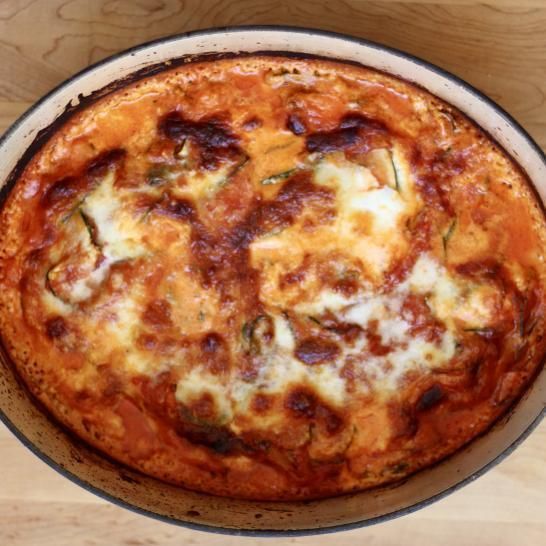5 Excellent Low-Carb Pasta Alternatives
If you like pasta but want low-carb recipes, these delicious options will hit the spaghetti spot without spiking your blood glucose.
We may be living in the golden age of alternative noodles. If you can’t – or don’t want to – eat conventional carbohydrate-heavy grain-based pasta, there are now a number of excellent options that allow you to scratch that spaghetti itch without spiking your blood sugar.

A few generalizations about these low-carb pasta alternatives
I’m going to tell you about some of our favorites here, including what we love about them, what we love less about them, and what kinds of recipes they’re best suited to. But first, there are a few generalizations that apply to these suggestions:
- Overall, these alternatives are more expensive than conventional pastas, but you often get a lot of bang for your buck, nutrition-wise.
- They tend to be quite low in calories and protein, so if you don’t pair them with a hearty sauce or a protein-rich main, you might be hungry later.
- They tend to be naturally high in fiber.
- They are all naturally gluten- and grain-free, which is a huge plus if you have celiac disease or a grain allergy, or if you are on a keto-type diet.
Enjoy the recipes, and feel free to mix and match. You certainly don’t need to pair a particular noodle with a particular recipe as we’ve done here.
I also want to note that in this overview, I am not addressing the many excellent bean-based pastas that are on the market—spaghettis and spirals made from chickpeas, red lentils, black beans, and the like. (While they offer significant nutritional value, they are not low in carbohydrates.)
1. Shirataki noodles (konjac noodles) and tofu shirataki noodles
If you’re counting carbs and craving pasta, these are your best bet.
Shirataki noodles are a traditional Japanese product made from a fiber called glucomannan, which is produced from konjac, an Asian root vegetable. Tofu shirataki noodles (our favorite) have tofu added for extra protein and chew. Both kinds are packed in water and are available, bagged. The tofu kind are usually in the refrigerator case wherever the tofu is.
Regular Shirataki noodles are often shelf-stable and so might be in the same aisle as the other Asian noodles. Brands you might see include Miracle Noodle, Nasoya, and House Foods.
Cost: $2.10 per 4-ounce serving (usually half a package)
Total carbohydrates: 3 grams per 4-ounce serving
Shirataki and tofu shirataki noodles: The pros
- These are noodles, and so they are very noodle-like: the texture is chewy and great, and they are bland in a good way. Everybody in my family loves them and feels like they’re just like regular pasta.
- They’re very high in fiber.
- They’re precooked and easy to prepare.
- They come in different styles (spaghetti, fettuccine, angel hair) and you can use them in absolutely any preparation.
Shirataki and tofu shirataki noodles: The cons
- They might seem strange, if you’ve never used them before: the packaging has kind of an aquarium vibe, and the noodles might smell a bit weird or fishy when you dump them into a colander (the smell goes away after you rinse them).
- Thanks to their high fiber content, they can upset your stomach.
- They might need to be refrigerated.
- I personally find it unsettling that an actual food item has so few calories (5 per serving), but given that this is a naturally occurring phenomenon, I think I need to get over myself about it.
Shirataki and tofu shirataki noodles: Best uses
Konjac and tofu shirataki noodles are so versatile that you can really use them in any pasta dish. Maybe because they are Asian in origin, I seem to like to use them in more Asian-style dishes like stir fries, ramen, and pad Thai.

2. Zucchini noodles
Spiralized ZucchiniAlso known as zoodles, these are simply long strands that have been spiralized from whole squash. You can buy them fresh or frozen at many supermarkets, or you can make them yourself.
As for how to make zucchini noodles, there are a number of different options. You can buy them pre-spiralized at the grocery store; the best ones are the fresh ones in the produce section; they tend to get less soggy than some of the newer pre-spiralized versions available in the frozen section. If you’re into wider, pappardelle-like noodles, you can simply shave zucchini down with a vegetable peeler for ribbons, although they will come out shorter than zoodles. To make them yourself, you can purchase a compact, handheld pencil-sharpener type spiralizer like the SpiraLife Vegetable Spiralizer ($13.99). Or if you spiralize multiple times a week, it may be worth investing in a larger, more stable mounted spiralizer that offers multiple blade settings, like the Paderno World Cuisine 6-Blade Spiralizer.
Cost:
$2 per 6-ounce serving
Total Carbohydrates: 4 grams per 6-ounce serving
Zucchini noodles: The pros
- Zucchini noodles are surprisingly delicious, especially if you make them fresh yourself. The strands are long and convincingly spaghetti-like, and they’re nice and firm under your teeth.
- They’re a whole food, which means they’ve been minimally processed and have no additives.
- Zucchini noodles have all the nutrients of zucchini, including fiber, vitamins, minerals, and antioxidants.
Zucchini noodles: The cons
- They are not chewy like conventional pasta.
- The frank green zucchini-ness of them might be off-putting to people who don’t like – or think they don’t like – zucchini.
Zucchini noodles: Best uses
Zucchini noodles are quite adaptable and take well to any pasta sauce, including pesto and tomato sauce. Because they have very little protein, I especially like to pair them with a meat sauce.
3. Hearts of palm noodles
Trader Joe's Hearts of Palm NoodlesThese noodles are made from the tender cores of palm trees that have been cut into pasta-like strands. You may be familiar with hearts of palms as a jarred or canned ingredient: These are usually cylinders that are cut crosswise into slices to add to salads.
To make noodles, the palm hearts are cut along the grain (picture string cheese) into shreds. They’re sold in cans or shelf-stable bags. Both Whole Foods and Trader Joe’s sell their own brand; other brands include Palmini.
Cost: around $1.50 per 3-ounce serving
Total carbohydrates: 4 grams per 3-ounce (1/2-cup) serving
Hearts of palm noodles: The pros
- They’re ready to eat and easy to use.
- Because they’re treated with both salt and acid, hearts of palm noodles are well-seasoned from the get-go.
- The flavor is evocative of artichoke hearts in a way that many people will like.
- They come in different styles, such as linguine, spaghetti, and angel hair.
- The hearts of palm may be grown sustainably.
Hearts of palm noodles: The cons
- They’re pleasantly crunchy out of the package, or softer if you cook them briefly, but they don’t offer any of the chew of conventional pasta.
- The flavor is evocative of artichoke hearts in a way that some people might not like.
- The hearts of palm may not be grown sustainably.
Hearts of palm noodles: Best uses
I like to lean into their tangy Mediterranean artichoke-olive vibe and serve them as the basis for Greek-style pastas and pasta salads—especially since you don’t need to cook them. You can, however, sub them into any pasta recipe you like.
4. Spaghetti squash noodles
Baked spaghetti squashSpaghetti squash is a winter squash that, when cut open and cooked, can be scraped up into a pile of spaghetti-like strands. Like other winter squash, it is most readily available in the fall and winter.
More recently, spaghetti squash noodles have also become available in the dry pantry goods section of the supermarket; brands like Solely and Trader Joe’s pre-bake, hand cut, and dehydrate spaghetti squash, so all that’s required is a quick boil out of the box to rehydrate it before serving.
Cost: $2-3 per serving (1/2 squash)
Total carbohydrates: 7 grams per 1-cup serving of strands (from 1/2 a squash)
Spaghetti squash noodles: The pros
- Spaghetti squash is sweet and mild. Even the people in my family who claim not to like winter squash like it fine.
- It’s quite noodle-like when you scrape it out of its skin, and I actually think this is a lot of fun—the way the cooked flesh turns into a heap of strands when you scrape it with a fork.
- It is a whole food, which means it hasn’t been processed at all and contains no additives.
- Spaghetti squash, like all winter squash, contains fiber, vitamins, minerals, and antioxidants.
Spaghetti squash noodles: The cons
- It’s a little fussy to prepare and it takes a while to cook.
- It’s not chewy like conventional pasta.
- If people in your house fear vegetables, they might not be excited to get served an intimidating squash half. (In this case, you can scrape it out yourself and serve it like regular pasta.)
Spaghetti squash noodles: Best uses
Spaghetti squash is low in calories and protein, so I like cooking it with hearty or rich sauces to make a filling main dish. After you pre-bake the squash, you can fill the wells with sauce and finish baking it this way to make sure that all the flavors really soak into the squash while it cooks. Plus, then you get to call them “boats”!
Credits: Catherine Newman
Source: diaTribe | 5 Excellent Low-Carb Pasta Alternatives
Healthy Bites















